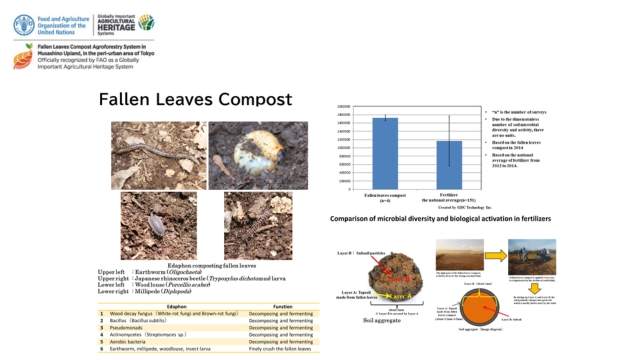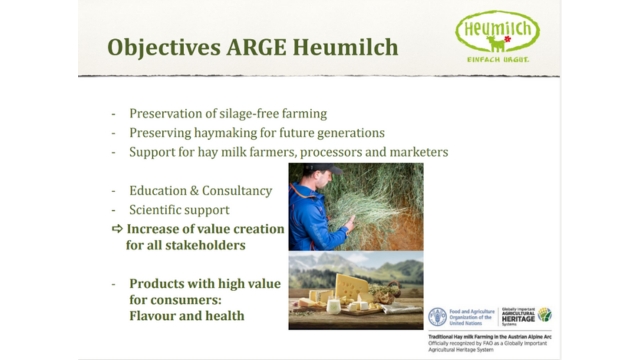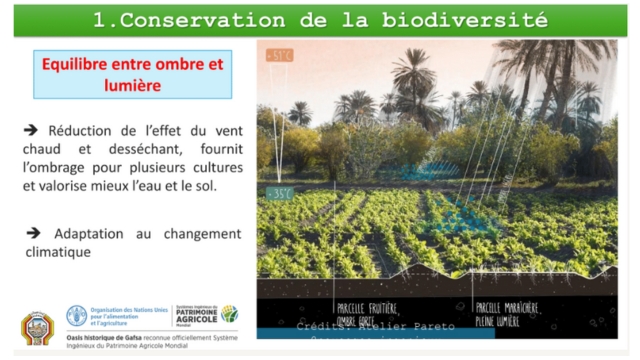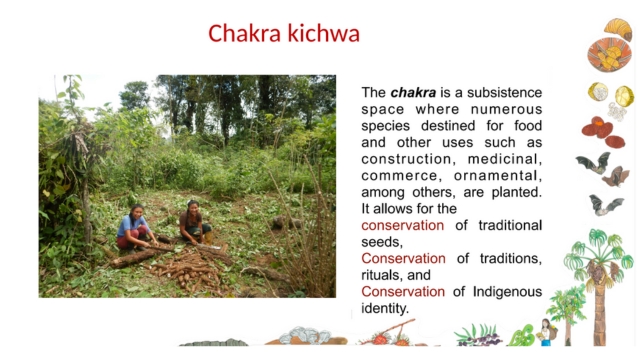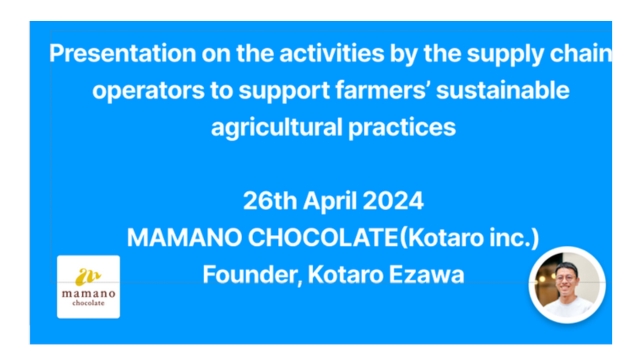Four agricultural heritage systems showcase how to be sustainable in times of transformation
From the Ecuadorian Amazon to Austrian hay milk production, from the historic oases of Gafsa in Tunisia to a peri-urban agro-ecological system in Tokyo, Japan. Featuring insights from Kotaro Ezawa, a food supply chain operator, on supporting sustainable agricultural practices through Mamano Chocolate
ge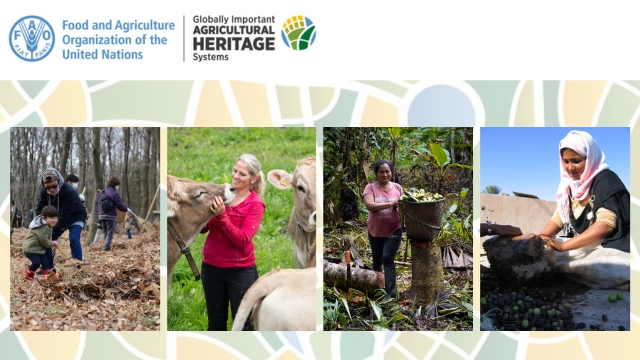
With presenters from GIAHS systems from Japan, Austria, Ecuador and Tunisia
Rome, Italy – Experts and representatives from four continents convened to explore sustainable practices in their traditional agricultural systems, now designated as Globally Important Agricultural Heritage Systems (GIAHS). Embedded in unique cultural and environmental contexts, these systems demonstrate how traditional farming practices support sustainable development, enhance biodiversity, and build resilience against climate change.
The virtual seminar, organized by the GIAHS Secretariat of the Food and Agriculture Organization of the United Nations and funded by Japan, is part of the 'Project for Promotion and Dissemination of Sustainable Agrifood Systems.' This initiative underscores the critical role of heritage agriculture in offering practical solutions to contemporary global challenges, demonstrating the effectiveness of integrating traditional wisdom with modern environmental management strategies.
Masahito Yokaichi, deputy director general at Japan's Ministry of Agriculture, Forestry, and Fisheries, opened the seminar with a virtual message that highlighted Japan's commitment to environmental sustainability. He detailed the green food system strategy adopted in 2021, aimed at reducing the use of chemical inputs and expanding organic farming. Yokaichi emphasized that GIAHS regions exemplify sustainable practices developed in harmony with nature, utilizing local resources effectively.
The seminar held the past 25 and 26 of April sought to enhance global cooperation among GIAHS stakeholders by sharing good practices and encouraging the conservation of ecosystem services. This collective effort aims to foster greater sustainability and improve the livelihoods of farmers worldwide.
Seminar insights
Scoping of the webinar: Yoshihide Endo, GIAHS Coordinator, explained the FAO's definition of “sustainable agrifood systems” and pointed out that sustainable food and agriculture include several key components, such as ensuring food and nutritional security, as well as three dimensions of sustainability, namely, the social, economic, and environmental aspects. While today's webinar mainly deals with the environmental context, all these key components of sustainable agriculture at GIAHS sites may need to be discussed on another occasion.
Fallen Leaves Compost Agroforestry System in Musashino Upland, in the peri-urban area of Tokyo, Japan: Anna Kimura, Promotion Council of Musashino’s System, provided a comprehensive look at this centuries-old system where fallen leaves are used to enrich the nutrient-poor soils of the Musashino Uplands. She explained how this method not only boosts soil fertility and agricultural productivity but also integrates with the local biodiversity and urban-edge land use, serving as a sustainable model for similar ecological challenges globally. This system not only preserves the local environment but also supports the community economically through tourism and direct sales of local produce, including distinctive sweet potato-derived products. Her presentation underscored the success of offering a model for sustainable practices that harmoniously blend tradition with modern ecological needs.
Traditional Hay Milk Farming, Austria: Heidi Trettler, Marketing Officer, and Karl Neuhofer, Chairman of ARGE Heumilch Österreich, highlighted the sustainable and traditional practice of hay milk farming in the Alpine regions. This method restricts cows to a natural diet of grass and herbs in summer and hay in winter, strictly prohibiting the use of silage. Hay milk farming adheres to rigorous regulations that limit the use of concentrated feed to 25%, ensuring it is GMO-free and sourced from Europe. The practice promotes biodiversity through less frequent mowing of grasslands in small-scales, allowing ecosystems to thrive, and ensures high-quality hay milk production. This milk is renowned for its purity and flavor, enhancing the value of dairy products like cheese that are integral to local economies. By integrating with tourism and traditional cheese-making, hay milk farming supports ecological sustainability and aids carbon sequestration, exemplifying a model of sustainable agricultural practice in challenging terrains.
Traditional Hay Milk Farming, Austria
Gafsa Oases, Tunisia: Takwa Wannasi, from the Association for the Preservation of the Medina of Gafsa, highlighted the sustainable agricultural practices of the Gafsa Oases, a system known for its agrobiodiversity and the use of a three-tier cropping system that includes vegetable and fodder production, fruit trees, and date palms. This method effectively utilizes vertical space and creates a microclimate that reduces hot winds while optimizing light and shade, which enhances water and soil usage. The oases use ancient techniques to preserve local seeds, optimize water use through traditional irrigation systems, and implement natural methods for soil fertilization and pest control, ensuring the resilience and sustainability of the agricultural practices in arid conditions.
Gafsa Oases, Tunisia
Amazonian Chakra, Ecuador: María Gabriela Zurita, researcher of agroecology at the Regional University IKIAM, Ecuador, showcased the Amazonian Chakra system, emphasizing its role in integrating traditional knowledge with biodiversity conservation. Managed by indigenous Kichwa communities, the chakra system exemplifies a holistic approach to agriculture that balances food production with ecological sustainability. Zurita highlighted the participatory governance model, where community members, especially women, play a crucial role in maintaining biodiversity and cultural heritage. She emphasized the system's resilience and adaptability, which are vital for sustaining the community’s way of life amid changing environmental conditions. The products from this region, including cacao, are vital not only for local sustainability but also for improving livelihoods through international trade.
Amazonian Chakra system
Mamano Chocolate, Japan: Kotaro Ezawa of Mamano Chocolate spoke about his company’s commitment to supporting sustainable agricultural practices through the cacao supply chain. He detailed how Mamano works directly with farmers in the Amazonian Chakra to ensure ethical sourcing and fair trade, paying premium prices that help improve local economic conditions. He also introduced his initiatives of holding webinars to inform consumers about the values of Amazon Chakra. Ezawa’s presentation showcased how supply chain operators like Mamano Chocolate play a crucial role in promoting global sustainability by linking traditional practices and international commerce.
Mamano Chocolate
Engaging and learning
The importance of international collaboration and the exchange of knowledge in promoting sustainable agrifood systems was at the core of the webinar. By showcasing successful adaptations of traditional practices within the GIAHS framework, the event highlighted scalable solutions for a sustainable future in agriculture, emphasizing the critical role of preserving agricultural heritage in promoting environmental sustainability. Reflecting the global interest in the FAO GIAHS program, the seminar attracted over 400 participants from different countries. Discussions were enriched by contributions in English, French, Spanish, and Japanese, indicating the broad international reach and relevance of the GIAHS initiative.
About GIAHS
The pressing necessity to transform existing agrifood systems, characterized by their substantial environmental challenges—including the excessive use of pesticides and fertilizers, greenhouse gas emissions, water overexploitation, biodiversity depletion, and soil degradation—into systems that are resilient and sustainable is becoming widely recognized on a global scale.
Emphasizing the crucial role of biodiversity preservation and the need to mitigate the environmental impact of agriculture, the Food and Agriculture Organization (FAO) of the United Nations has recognized certain traditional agricultural, forestry, and fishery systems as Globally Important Agricultural Heritage Systems (GIAHS). These systems, which are richly integrated with local cultures and biodiversity, have been carefully adapted to the unique climatic and natural environments of their respective regions. They stand out for their vital contribution to preserving cultural heritage for future generations. As of February 2024, 86 agricultural heritage systems have been officially designated in 26 countries.
Find out more


